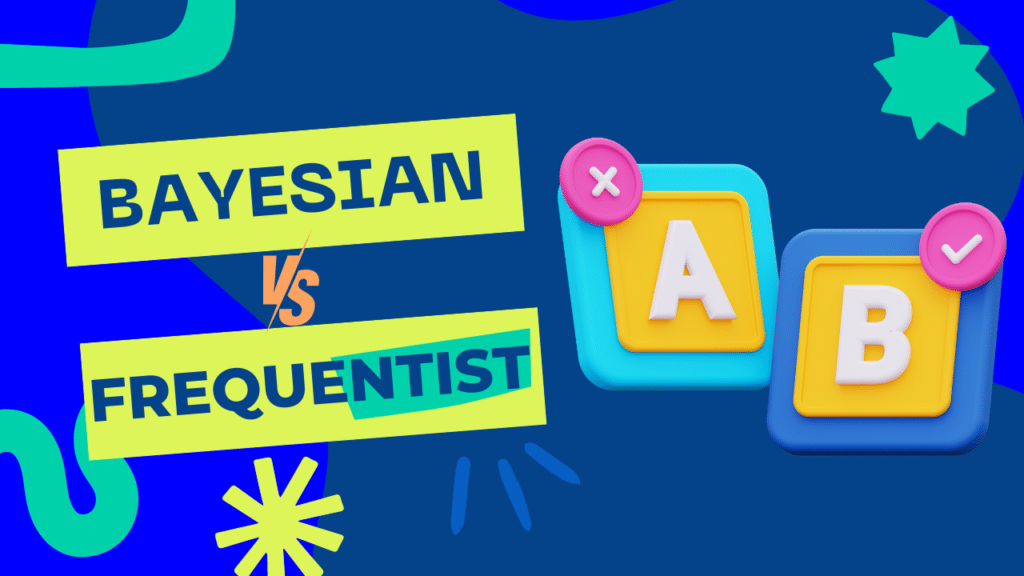Editor note: this is a guest post by Sergey Aliokhin @ Ahrefs
When you as a businessman releases some service or a product, you eager to see the sales skyrocket from the start. And it is for a good reason.
You worked hard to offer something valuable on the market. You expect to spread your service throughout the world of web. You know your product could be a leader in the niche you represent.
However, even though you can nothing to do but stay among outsiders while your competitors hit the jackpot.
Why does it happen?
It happens due to the fact that you don’t know how to promote your service in a proper way. I don’t talk about various advertisements. I am talking about a more creative way to do it.
This way is called outreach.
In this very post, I will show you a step-by-step process how to do outreach correctly to gain more positive results.
Let’s start.
SIDE NOTE: if you would like to know how to do a keyword research in 2017, you should read this comprehensive guide.
1. First Step – Prepare Your Basis
Every big deal demands to be started with small steps. Doesn’t matter what kind of business you want to run. Practice shows that only minority of businessmen could create a successful business from the scratch. However, it needs lots of money to be invested.
Nevertheless, if you have a limit budget and enough time, you can achieve this goal by starting with collecting your potential customers.
But how can you find them?
- Focus on your niche
Before you start working on attracting new customers, you should teach yourself to understand the core aspects of the niche you are involved.
Let’s say you decided to run your business as an eCommerce marketer. I am sure you know that “eCommerce” is a collective term, which includes various niches in it.
If you ask Google something like “eCommerce types”, you’ll get this:
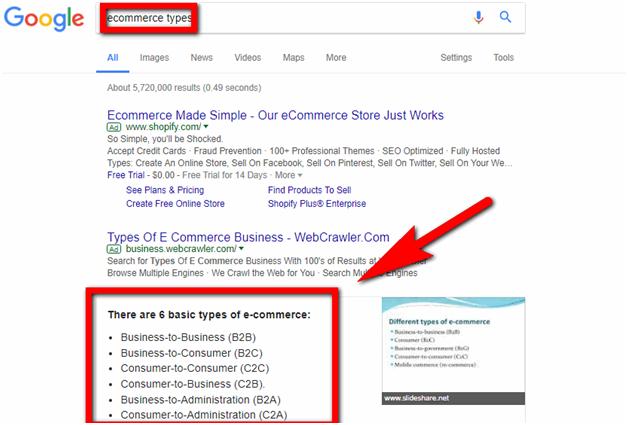
Google represents 6 types of eCommerce. So, you should clearly understand for yourself, which type is more related to you. According to your choice, you will be able to identify your target audience.
- Target audience
Since you’ve discovered your niche, it is time to take care of your potential customers. It won’t be difficult to find a bunch of people from the start.
NOTE: You can put an eye on the most prominent representatives in your niche that are called influencers. However, it requires to know what is influencer marketing and how to rip the benefits of it. The reason why these influencers are a great opportunity to get new customers is simple. Sorry for the tautology but influencers “influence” over customer’s preferences in choosing a product. So you can find lots of opportunities discovering a particular influencer’s user database.
There are two basic ways to find customers – using Social Media channels and with the help of your competitors.
The first place I advise you to visit is LinkedIn. You just put a query “B2B ecommerce” and see what LinkedIn offers:

LinkedIn reveals you a list of people who have a direct bearing on B2B eCommerce. You can use these opportunities for pitching your product.
Twitter also works great in terms of searching your target audience:

Twitter represents you users and companies to choose as well. Use these opportunities too.
Despite the fact that Social Media channels are a good way for searching prospects, it is quite tricky due to one reason. These social platforms suggest you users who are related to your niche in general but they might be not interested in your service.
I believe you’ve already guessed why. The reason is very generic – your niche has a wide spectrum of activity; thus, a product list is spangled with diversity fantastically. And it will be a bit problematic to find those customers who would be interested in your product for hundred percents.
In order to avoid all kind of misconceptions, I recommend you to work with the database of customers your competitors use.
Use Google and a right keyword to find what you need. For example, you launched an online shop that offers glass for windscreens in the United Kingdom. Yes, you might have some local customers but you want more. So, put a query in Google “glass for windscreens in uk” and see how many results it will get you:
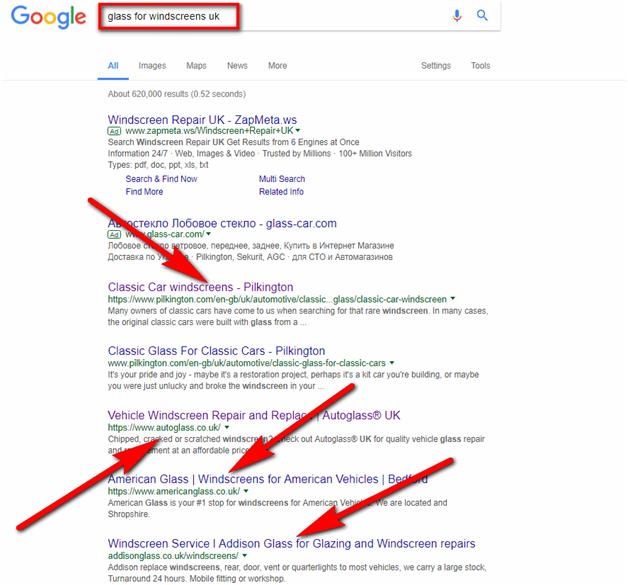
I pointed out the website of the competitors you might refer to find new prospects. And now use the links of your competitors to get the backlinks that might bring you customers.
Just to remind you what backlinks are. Backlinks are the links from other websites that make a reference to the main original source of information. In this very case, these backlinks could be created by the users who are interested in a particular subject. Hence, you can consider these backlinks as the opportunities to find your consumers.
To find the backlinks I advise you to use the tool for checking backlinks from Ahrefs. Just put a competitor’s link into a search bar and see what you’ll get:
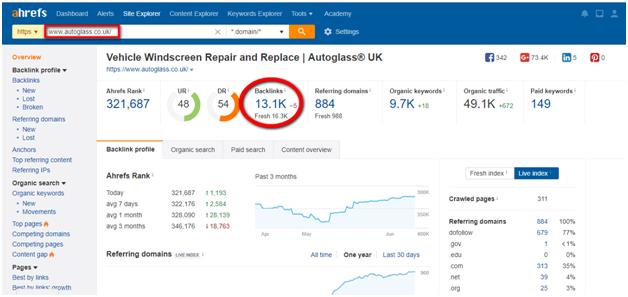
This particular link has 13.1K backlinks in general. If you want to get more or less the freshest results, you can narrow down the list by choosing the exact period of time you need:
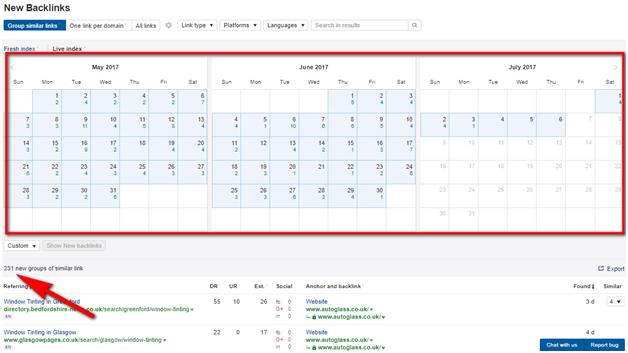
In this very example, I chose the results for the past two months. And the average amount of backlinks decreased to 231 items. Afterwards, collect the backlinks you are satisfied with in a spreadsheet and go straight to the second phase of an outreach process.
2. Processing the Data
Having backlinks and the names of the potential prospects is just a third part of the entire process. Now your aim is to get a more detailed information about the customers you’re willing to reach out to.
- How to find personal email address
Before I start telling you about the actual process of finding personal email addresses, I would like to explain to you why you should be focused toward personal emails.
When you send a direct message to a third party email address, it doesn’t mean the message will reach out the recipient personally. Sometimes you can get something like this in return:
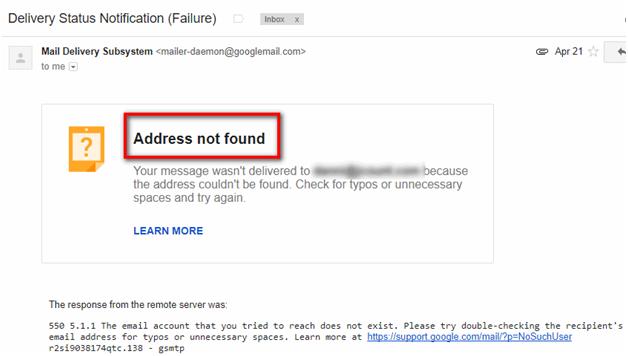
It happens due to the reason that the email address you could find on the Internet, was invalid anymore.
That’s why I encourage you to search for personal email addresses permanently.
The first thing I would like you to do is to detect a current job location of every customer you want to get in touch with.
Again, LinkedIn works pretty well here as well. Skim through “experience” section and find the person’s current company he or she works for:

Plus, sometimes users point out their email addresses too:
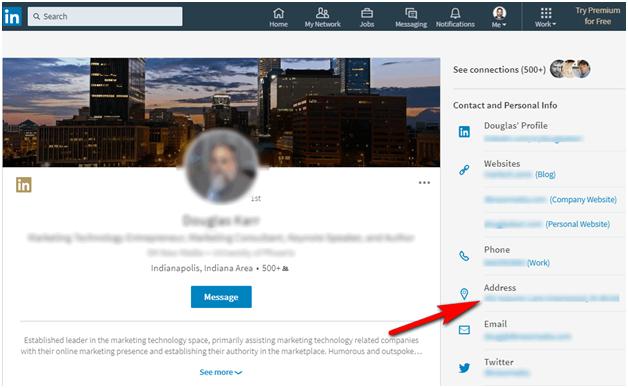
But if you don’t want to spend your time searching on Social Media channels, I recommend you to try a few cool tools for “email hunt” – Find.that email and Voilanorbert. Here you will need to know person’s full name and a current place of work (company’s website). The rest will be done by these tools. They work pretty well but I insist on double checking the email addresses with the help of extension called Rapportive. It always shows if the email address is valid or not:
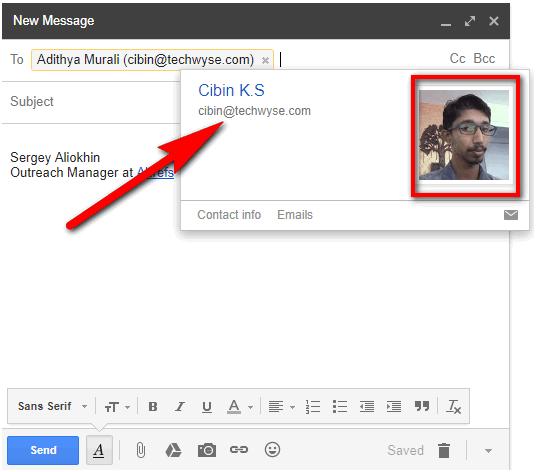
The end result is that you’ll have a solid list of verified and valid personal email addresses. Afterwards, just one small thing is lacking – an outreach stage.
3. Outreach
I’ve just covered only a preamble of the entire process. Now I am going to illustrate you the main aspects of outreach itself.
- Personalized email templates
You never know how your customer will react on the message you sent him or her. But you know without doubts that the major part of your targets gets lots of messages every day.
Due to this fact, the chances your message will be reviewed (and replied) are fading away. Hence, you must create a template that will impress your recipient.
I would like to show you a “bad” and a “good” examples of email templates to compare first:
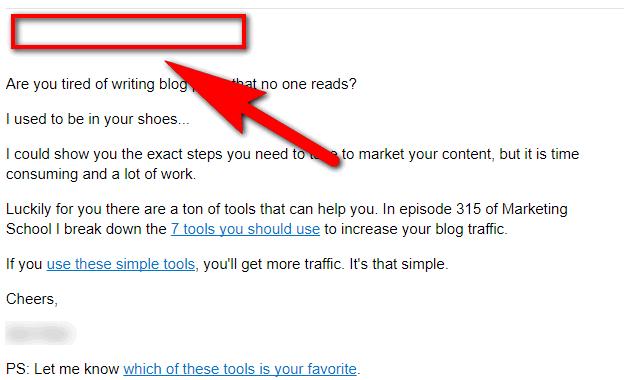
This example clearly shows that the one who tried to reach me out didn’t even bother himself to point my name. I don’t consider such emails. I ignore them. I can see that the aim was to promote content but not to pique my interest. Thus, don’t repeat this mistake.
Here how we craft emails at Ahrefs:
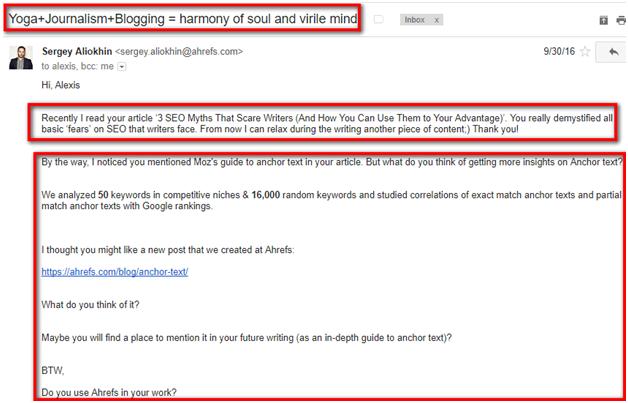
I hope you see the difference. Personalized subject line, personalized introduction. I’ve made a research on the person I wanted to contact. I found out her interests, hobbies and read a couple of articles she had written before. Using the information I got I could personalize the template making it more non-intrusive, short and to the point.
By the way, you can “get closer” to your target starting to build your relationships out of business. It means, try to discover customer’s Social Media channels first. Pay attention to what the person shares, tweets. Take a part in the conversations your potential client has been noticed.
Don’t be afraid of giving some pieces of advice. Try to help your customer to resolve some issue even if it has nothing in common with your purposes. It could be related to whatever you want – starting with different suggestions on using some useful services like UpstreamCommerce’s dynamic pricing tool, sharing your thoughts on some publications, ending with satisfaction/dissatisfaction of Donald Trump’s policy. The aim is to get noticed by the customer.
I must admit that crafting personalized template is not a hard task. Yes, it needs some creativity and patient; it is a bit time-consuming and boring. Notwithstanding these nuances, the game is worth the candle.
- Forget about standard subject lines
The first thing any recipient draws attention to is a name of the person who has sent this message. Then goes a subject line.
It is hard to predict what subject line would “run smoothly”.
I advise you to remember and follow two simple rules – stick to the main point of the message you send and keep it personalized. In my previous example, the subject line didn’t reflect the main purpose of the message, I admit it. But I relied on “intrigue” effect and this kind of subject lines had a positive result for me:
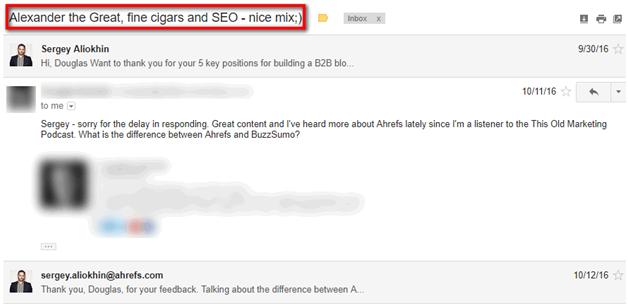
- “Red” email patterns
Non Personalized templates have patterns that indicate that the message has been created by the same scheme. Here is what I am talking about:
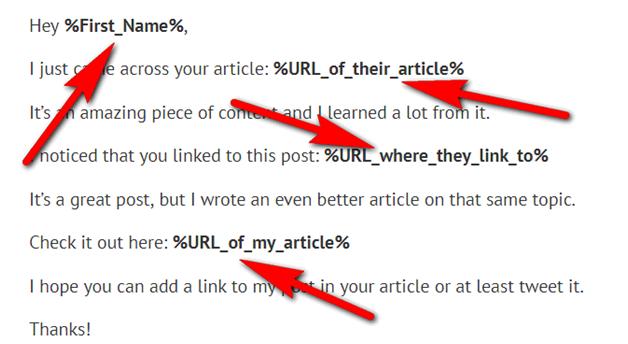
The arrows show you the exact patterns you should try to avoid. I know it is pretty hard to personalize template without using any of these patterns. In order to make your template better, try to mix these patterns with your own changes:
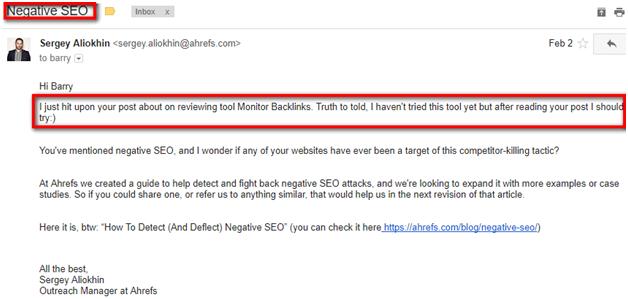
You can see that there are some standard patterns are presented in my example. But I did a personalization as well. It has a section where I share my thoughts on recipient’s article; the subject line is strict to the point of the message. Anyway, the results from this outreach campaign were good enough.
- Follow-up email
The truth is that not every message you send will be reviewed and replied. Furthermore, you won’t be upset with a few messages that were ignored. It could be calculated in dozens of emails. And that is a drama.
You shouldn’t bother yourself with an endless compunction that the messages haven’t been read and replied. Come into recipient’s world. Any business person you send the message gets hundreds of emails per day. Thus, your email might simply get lost.
Likely, nobody restricts you with reaching out your targets one more time!
Please, take into account that a follow-up message has 30% higher response rate in contrast to the first message you’ve sent.
So, it means you must never give up and go until the end!
When should be a follow-up message sent?
There is no definite time to do a follow-up email blast. It depends on various factors. Nevertheless, you should wait a couple of days before sending your follow-up message.
I had a practice of sending follow-up messages in a few days, in a few weeks, months, and in a half of a year after the very first message I’ve sent to the recipients.
Sometimes my follow-up emails were failed but in most cases I got feedbacks.
To show you real pieces of evidence, I would like to provide you with the examples from my own experience.
As I’ve already said, sometimes it needs a few days to wait before a follow-up pitching:
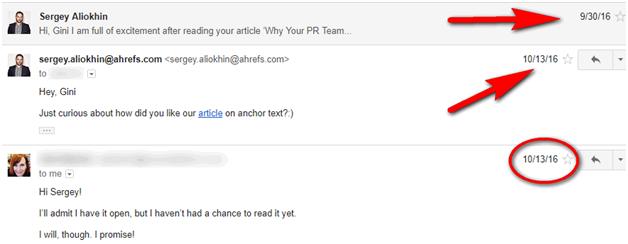
…sometimes it needs to wait for 10 months in a row:
Taking into consideration these facts, I can assure you that sending follow-up emails is a good opportunity to trigger your customers to get in touch with you.
4. Keep an Eye on the Progress You Have
“Barking up the wrong tree” is a contributing factor in everything you do. Outreach is not an exception. Here you must track the progress of each email template you use if you don’t want to end up empty handed.
To avoid all this stuff I recommend you to automatize this process.
We run our outreach campaign at Ahrefs using Buzzstream. Metrics you should pay your attention to are open and reply rates.
These metrics can help you understand which exactly template works the best:
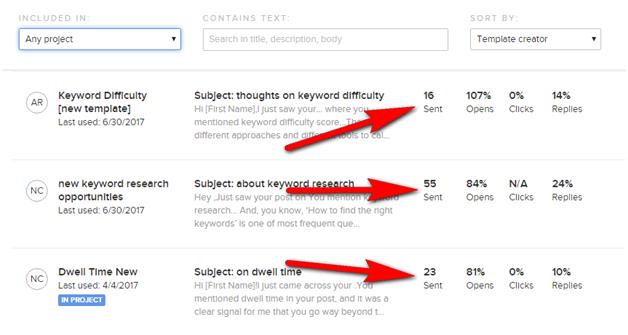
You can see a couple of different templates we use for the same project. Each template has been sent a certain amount of times. Buzzstream shows us each template’s open rate, a percentage of clicks and replies. Analyzing this information, you can come up with a decision which email template works better and which one should be deleted at all.
There is a green “eye” icon that indicates if the message has been seen by the recipient:
Tracking the progress of your outreach is very important. It keeps you away from doing a futile work and makes outreach more successful.
SIDENOTE: Did you know that outreach is a great way to distribute content? If you want to find out a few useful insights on this matter, I recommend you to read the methods of planning your online content distribution by eTraffic.
Conclusion
Outreach is not just a strategy, it is an art. The art that contains a fair amount of nuances that can never be missed. A single minor deviation could lead you to a blind alley. Outreach is a complex process, so you should think twice before doing each step.
This small but yet detailed article has a purpose to teach you doing these steps wisely and steadily.
I am sure that you’ll be able to start a new outreach campaign and drive it to success after reading my post.
If you have something else to add to this guide, I would appreciate if you could share your thoughts in a comment section.
Don’t forget to tell your friends about these tactics on Social Media:)
This is a guest post by Sergey Aliokhin
Sergey Aliokhin is a Marketing Manager at Ahrefs. Apart from working at Ahrefs he likes spending his time with family, studying martial arts and plucking fat bass guitar strings.


